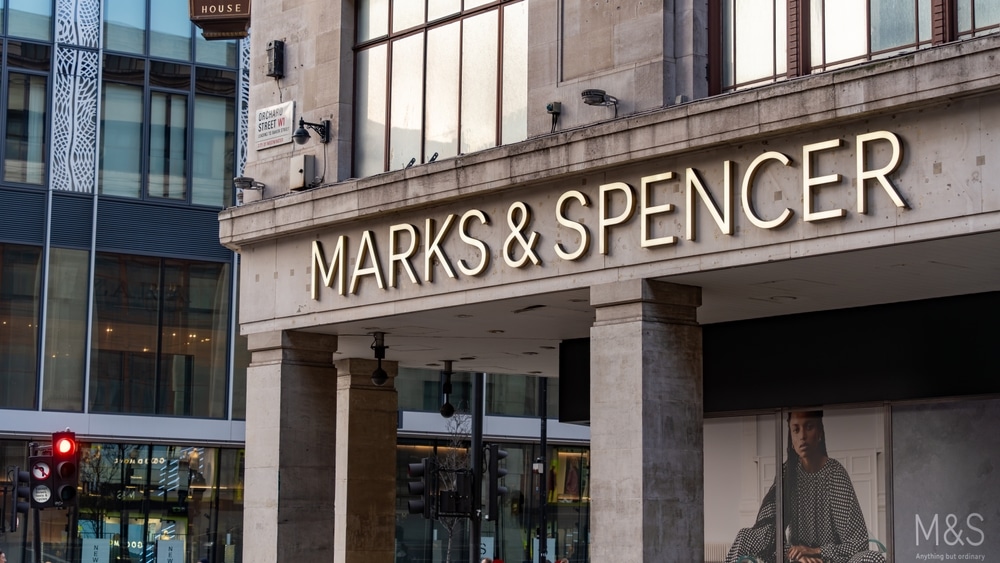Richard Price’s departure from Marks & Spencer (M&S) marks a significant transition for the retailer, particularly within its clothing and home division. His journey at M&S started in 2019, a crucial moment when the retailer was grappling with underwhelming designs and a product lineup that was convoluted and failed to resonate with a wide range of shoppers.
Fast forward to 2025, and you’d hardly recognize M&S’s clothing offerings. The brand has worked hard to create a collection that speaks to a much more diverse customer base, even if it might not be the first choice for your grandmother. Under Price’s guidance, M&S has not only regained market share but has also established itself as a trendsetter on the UK’s high street.
As he prepares to leave his post in April, Price’s impact on M&S is clear. He leaves behind a more diversified product selection and an energized brand ready to tackle the future head-on. However, one lingering question remains: Can M&S maintain its upward trajectory without Price, whose vision catalyzed such a significant change?
Stepping into this pivotal role will be John Lyttle, the former CEO of Boohoo, celebrated for his extensive experience in the retail landscape. His focus on transformation could play a crucial part in deciding how to build on Price’s legacy and ensure that M&S continues its success story. It’ll be fascinating to watch how Lyttle approaches this role, maintaining the momentum set by Price.
At the heart of Price’s strategy to revamp M&S’s clothing line was his unwavering belief in the retailer’s foundational product categories. Notably known for its quality basics and a strong reputation in lingerie, M&S had long been a staple for dependable apparel. Yet, areas like denim and occasion wear were frequently left behind.
Recognizing the potential in these categories, Price made it his mission to enhance M&S’s core strengths while addressing the neglected segments. Denim, in particular, received a significant makeover. The introduction of fresh styles such as wide-leg and boyfriend jeans, coupled with improved fabric quality, resulted in a remarkable 18% market share in women’s denim, a record high for the company. Meanwhile, the lingerie segment—long considered a hallmark for M&S—also underwent transformation, emphasizing fit, comfort, and variety, thus further entrenching the retailer’s standing as a leader in this area.
Occasion wear was similarly rejuvenated. Price’s team curated it to offer fashionable yet affordable options, making M&S a go-to destination for customers regardless of their events. Through this thoughtful refinement of its product offerings, M&S successfully lured in both loyal patrons and a fresh, youthful audience eager for style.
One of Price’s most impactful decisions was to streamline the retailer’s extensive product range, putting a premium on quality rather than sheer quantity. In the past, M&S had a reputation for vast selections, which sometimes led to confusion among customers, especially when it came to similar items like trousers and knitwear.
By narrowing the assortment, Price eliminated excess variations, allowing the retailer to focus on key products that shoppers truly wanted. This shift simplified the shopping experience, ensuring every item reflected M&S’s brand ethos and enhanced overall quality.
The results were encouraging: M&S saw significant growth in essential categories, including trousers, knitwear, and outerwear, contributing to a 5.3% increase in Clothing & Home sales in the 2023/24 financial year. By honing in on its strengths and adopting a more curated approach, M&S not only reinforced its reputation as a lingerie leader but also appealed to both loyal customers and a new wave of younger shoppers seeking stylish reliability.
Price’s influence extended well beyond product offerings; it also involved reshaping the team to foster fresh talent and innovative ideas. A key aspect of this was the hiring of Topshop fashion director Maddy Evans, a move aimed at connecting with younger shoppers—a goal that’s clearly reaped rewards.
Under Evans’ leadership, the introduction of modern, trend-forward designs has been pivotal. Recently promoted to oversee M&S Woman, Evans will now expand her influence into the lingerie category, working alongside Charlotte Davies, who also joined the team with a wealth of experience from Hunkemöller, to further cement M&S’s leadership in fit, comfort, and cutting-edge design.
Additionally, Price brought on Mitch Hughes, formerly of Boohoo and Topman, to spearhead menswear initiatives. The revitalization led to the launch of M&S’s first dedicated menswear campaign in eight years, showcasing versatile pieces designed to inspire customers toward effortless styling.
Thus, Price leaves behind not just a transformed brand but a strong leadership team prepared to carry on the work he initiated. His legacy is a blend of M&S’s traditional strengths along with a fresh, modern approach to fashion.
In navigating the often-shifting sands of retail, Price acknowledged the importance of retaining established clientele while also engaging a new generation of fashion-conscious shoppers. Rather than chasing fleeting trends that could risk alienating long-time customers, he fostered an evolution grounded in M&S’s legacy, ensuring it could offer pieces that are both timeless and trendy.
Another vital component of Price’s strategy was pivoting away from heavy discounting and instead building customer trust through quality offerings sold at full price. This strategic shift paid off—last year, 81% of M&S’s clothing and home sales were made at full price, a striking rise from 63% in 2019/20.
As Richard Price prepares to leave M&S, the fabric of the retailer has been woven with his vision and determination, setting a future stage where both devoted patrons and the upcoming generation of shoppers can find their place within a revitalized brand. The future looks promising, but the question remains: can M&S sustain its momentum in this dynamic retail landscape without the guiding hand of Richard Price? Only time will tell.































